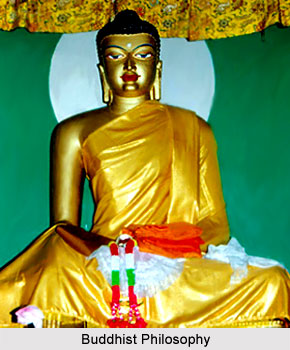 Vaibhashika was a Buddhist school that belongs to the Sarvastivada tradition that believes underlying all material and mental processes there are many types of real atomic factors. The school was originally of a mystical nature which later developed into materialistic concern with a focus on materialism and existent phenomena. The key beliefs of this school are that mental concept can be formed through direct contact between the mind through the senses, such as sight, touch, taste and external objects.
Vaibhashika was a Buddhist school that belongs to the Sarvastivada tradition that believes underlying all material and mental processes there are many types of real atomic factors. The school was originally of a mystical nature which later developed into materialistic concern with a focus on materialism and existent phenomena. The key beliefs of this school are that mental concept can be formed through direct contact between the mind through the senses, such as sight, touch, taste and external objects.
The Vaibhashika doctrine involves an elaborate atomic theory as the distinction they drew between the conventional and the ultimate was between compounds and simples. Even though they had a conventional reality, compounded objects were not ultimately real. Their goal was to specify the objects that were elemental and so were ultimate truths in the sense that they were not prone to further analysis.
Two modes of existence and each atomic factor are actualized and non-actualized. Each occurs and disappears in a single moment. Each has an essential nature that remains the same throughout. Past and future dharmas exist if cognitions have real things as their objects. Cognition arises when there is an object. Actualization in the present moment is the exercise of a dharma`s effective activity. This effectiveness is conditioned by and conditions other atomic factors. The atoms pre-exist and continue to exist even though in another dimension explaining the continuities that one experiences.
Vaibhashika asserts sensory non conceptual cognition of an object through direct contact, without the medium of a mental aspect. The Buddhist Vaibhashika School asserts that there are three uncompounded entities which are existent and permanent.Vaibhashika is a Hinayana school of Indian Buddhism which does not assert automatic awareness and does emphasize external phenomena. The Hinayana Vaibhashika School developed comprehensive lists of objects that ultimately existed. Vaibhashika School taught a form of plural realism. The Vaibhashika School believes that relative truth is that which can be broken down into parts, whereas ultimate truth is indivisible.



















